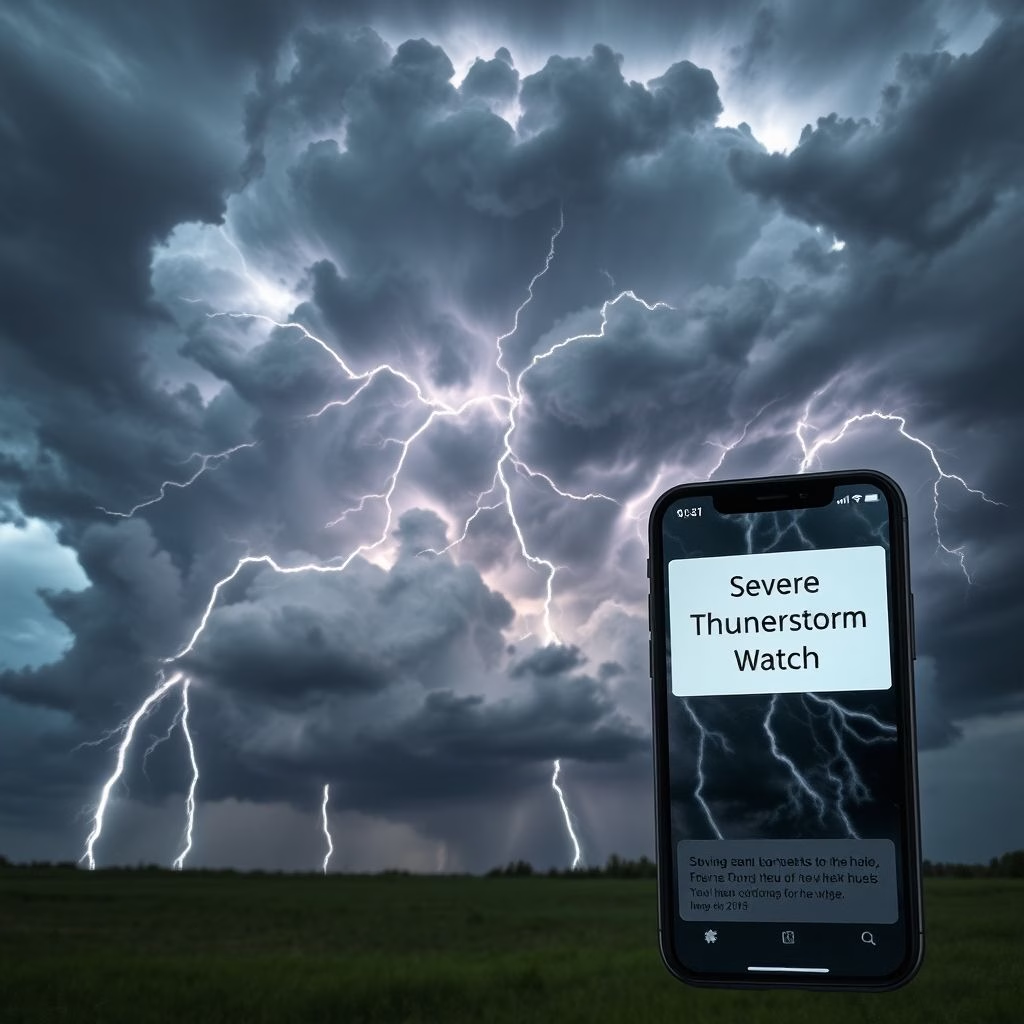Understanding Severe Thunderstorm Watches: Staying Safe During Storm Season

Understanding Severe Thunderstorm Watches: A Guide to Staying Safe
Weather can be unpredictable, and during storm season, it’s crucial to understand the alerts issued by weather forecasting agencies. One of the most important of these is the severe thunderstorm watch. This advisory is designed to alert the public to the potential for severe thunderstorms in a specific area within the next few hours. Knowing what a watch means, how it’s issued, and what actions to take can significantly improve your safety and the safety of those around you.
What a Severe Thunderstorm Watch Means
A severe thunderstorm watch is not a guarantee that severe weather will occur. Instead, it indicates that the atmospheric conditions are favorable for the development of severe thunderstorms within a designated region. These conditions often include instability in the atmosphere, sufficient moisture, and wind shear. The purpose of the watch is to encourage vigilance and preparedness. This means staying informed about the weather, monitoring weather updates, and having a plan in place should severe weather develop.
Criteria for Issuing a Watch
The specific criteria for issuing a severe thunderstorm watch can vary slightly depending on the country and the weather forecasting agency. However, common factors considered include the potential for:
- Strong winds: Sustained winds of 58 mph (93 km/h) or greater.
- Large hail: Hailstones with a diameter of 1 inch (2.5 cm) or greater.
- Torrential rainfall: Heavy downpours that can lead to flash flooding.
- Potential tornadoes: The possibility of rotating thunderstorms that could spawn tornadoes.
A watch is issued when the overall environment is conducive to these severe weather elements. It’s important to remember that a watch is a proactive measure, alerting people to the possibility of danger.
Watch vs. Warning: What’s the Difference?
It’s crucial to differentiate between a severe thunderstorm watch and a severe thunderstorm warning. A watch means conditions are favorable for severe thunderstorms to develop. A warning, on the other hand, means that severe weather is imminent or occurring. If a warning is issued for your area, you should take immediate action to protect yourself. This usually means seeking shelter in a sturdy building, away from windows, and staying informed about the evolving situation.
The Role of the Storm Prediction Center (SPC) in the United States
In the United States, the Storm Prediction Center (SPC), a branch of the National Weather Service, is the primary agency responsible for issuing severe thunderstorm watches. Based in Norman, Oklahoma, the SPC uses sophisticated weather models, data from various sources (including weather balloons, radar, and satellites), and the expertise of meteorologists to assess the risk of severe weather. The SPC’s mission is to provide timely and accurate forecasts and watches to the public and emergency management agencies.
How the SPC Issues and Disseminates Information
The SPC utilizes a variety of tools and methods to analyze the atmosphere and predict severe weather. One critical tool is the WarnGen software, used to create and format watch information. Once a watch is issued, the SPC disseminates the information through various channels, including:
- Public weather websites and social media.
- Weather forecasting services.
- Emergency management agencies and local authorities.
- The NOAA Weather Radio.
This wide distribution ensures that the public and relevant agencies are promptly notified of the potential threat.
Staying Safe During a Severe Thunderstorm Watch
When a severe thunderstorm watch is issued for your area, it’s important to take the following steps:
- Stay informed: Monitor weather forecasts and updates from reliable sources such as the National Weather Service, local news, or weather apps.
- Review your safety plan: Know where to seek shelter (a sturdy building), and have a communication plan in place for your family.
- Prepare for potential hazards: Secure outdoor objects that could be blown around by strong winds, and charge your mobile devices.
- Be vigilant: Keep an eye on the sky for any signs of approaching severe weather, such as dark clouds, flashes of lightning, or loud thunder.
Conclusion
Understanding the meaning and significance of a severe thunderstorm watch is essential for staying safe during storm season. By staying informed, preparing for potential hazards, and knowing the difference between a watch and a warning, you can significantly reduce your risk and protect yourself and your loved ones. Always heed the advice of local authorities and weather forecasters. Remember, weather can change rapidly, so stay vigilant and prepared.
For further information, consult these resources:
https://weather.com/maps/severewatches
https://www.accuweather.com/en/us/severe-weather
https://en.wikipedia.org/wiki/Severe_thunderstorm_watch




